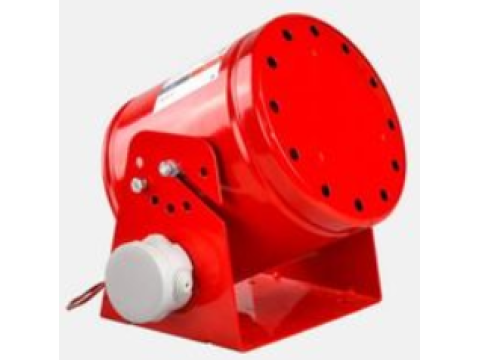Overview of Stationary Fire Suppression Systems
Stationary fire suppression systems are complex, integrated solutions designed to detect, contain, and extinguish fires automatically, without human intervention. These systems consist of:
- Piping networks for delivering extinguishing agents.
- Fire alarms and detection systems.
- Evacuation management systems.
- Additional components like ventilation controls and access systems.
Their type and configuration depend on the fire hazard classification of the building and the materials stored or processed within.
Types of Stationary Fire Suppression Systems
1. Water-Based Systems
Water systems are the most traditional and widely used type of fire suppression, ideal for Class A fires (solid combustibles).
Advantages:
- Safety: Harmless to humans, allowing immediate activation.
- Cost-Effectiveness: Affordable installation and maintenance.
- Versatility: Suitable for various building types and layouts.
Limitations:
- Ineffective for Class B, C, D, or E fires (flammable liquids, gases, metals, and electrical fires).
- Potential water damage to property and materials.
- Requires anti-freeze solutions in cold environments.
Subtypes:
- Sprinkler Systems: Activate locally via heat-sensitive triggers.
- Deluge Systems: Cover large areas with high water volume.
- Fine Water Mist Systems: Use less water for minimal damage, effective on some electrical fires.
- Monitor Systems: Manual systems for outdoor applications like lumberyards.
2. Foam Fire Suppression Systems
Foam systems mix water with a foaming agent to combat flammable liquid fires (Class B).
Classifications:
- Low Expansion: Effective for surface fires.
- Medium Expansion: Suitable for larger areas.
- High Expansion: Fills entire volumes to smother fires.
Configurations:
- Surface Systems: Cover surfaces with foam.
- Volumetric Systems: Fill entire rooms with foam for maximum coverage.
- Circulation Systems: Maintain continuous foam circulation for rapid activation.
Applications: oil refineries, fuel depots, and chemical plants.
3. Gas Fire Suppression Systems
Gas systems use inert or synthetic gases like nitrogen, argon, or halocarbon compounds to extinguish fires by displacing oxygen.
Advantages:
- Minimal residue, preserving sensitive equipment.
- Effective for Class E fires in data centers, archives, and museums.
Limitations:
- Requires airtight spaces for effectiveness.
- Some gases (e.g., Halon 125) require evacuation before activation.
4. Powder and Aerosol Systems
Powder systems are ideal for extinguishing fires involving flammable metals, chemicals, and high-voltage equipment. Aerosol systems, while similar, offer a finer distribution of extinguishing agents.
Applications:
- Transformer substations.
- Industrial facilities storing reactive chemicals.
- Data centers and conveyor systems.
Advantages:
- Effective across Class B, C, D, and E fires.
- Operates in environments with extreme temperatures.
Limitations:
- Residual powder cleanup is necessary.
- Toxicity of extinguishing agents.
Installation and Maintenance
Proper installation requires:
- Professional Design: Plans must include fire risk analysis, building layout, and integration with existing safety systems.
- Certified Installation: Carried out by licensed organizations following regulatory standards.
- System Integration: Automated responses include activating alarms, ventilation, and access systems.
- Regular Maintenance: Routine inspections ensure functionality, including recharging extinguishing agents and cleaning sensors.
Applications
Stationary fire suppression systems are mandatory for many facilities, including:
- Commercial buildings.
- Industrial plants.
- High-risk storage facilities.
- Cultural heritage sites and archives.
Conclusion
Stationary fire suppression systems provide unmatched fire safety for diverse environments. From water and foam to gas and powder solutions, these systems are tailored to the specific needs of each facility, ensuring reliable protection for people and property.

